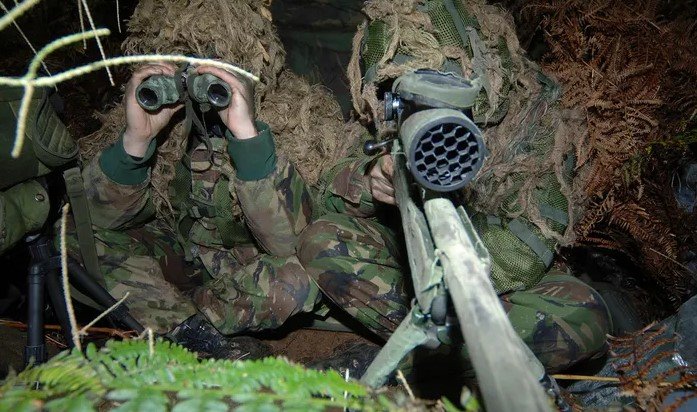Researchers have unveiled a groundbreaking ultra broadband digital camouflage strategy that hides objects across optical, thermal infrared, terahertz, and microwave bands. This innovation, detailed in a recent study, covers over 80 percent of atmospheric windows and simulates natural environments to fool advanced reconnaissance systems.
The Rise of Advanced Reconnaissance Threats
Modern military reconnaissance has evolved far beyond simple visual detection. Systems like unmanned aerial vehicles and light armored vehicles now use hyperspectral and multispectral imaging to spot shapes, materials, and even temperatures of targets.
This shift creates huge challenges for traditional camouflage. Old methods fail against sensors that scan multiple wavelengths, from visible light to microwaves. The new technology addresses this by integrating spatial and spectral camouflage across vast ranges.
Experts say this could change how forces operate in contested areas. With global defense spending hitting record highs in 2025, nations are racing to stay ahead in stealth tech.
How the Ultra Broadband System Works
The core of this camouflage lies in optical spectroscopy. It analyzes light interactions to mimic natural spectra, making artificial objects blend seamlessly with surroundings like vegetation.

In the optical band from 0.4 to 2.5 micrometers, the system simulates plant spectra with a deviation rate under 0.2. This low error makes it nearly impossible to distinguish fakes from real foliage.
For thermal infrared, terahertz, and microwave bands, it creates multilayered patterns that match background intensities. This covers thermal IR in mid and long wave infrared, plus terahertz and microwave frequencies.
The technology spans six orders of magnitude in wavelengths. Researchers achieved this by coupling responses across bands, ensuring consistent performance.
One key metric is the structural similarity index. The system scores an average of 0.52, which experts consider strong for evading detection.
Key Features and Performance Metrics
This camouflage stands out for its broad coverage and precision. Here are some standout aspects:
- Covers visible to shortwave infrared for optical stealth.
- Handles thermal bands to mask heat signatures.
- Includes terahertz and microwave for radar evasion.
- Simulates natural environments with high fidelity.
To highlight its effectiveness, consider this comparison table of covered bands versus traditional methods:
| Band Type | Wavelength Range | Traditional Coverage | New Tech Coverage |
|---|---|---|---|
| Optical | 0.4 to 2.5 μm | Partial | Full |
| Thermal IR | 3 to 14 μm | Limited | Comprehensive |
| Terahertz | 0.1 to 10 mm | None | Integrated |
| Microwave | 1 mm to 1 m | Basic | Advanced |
This table shows how the new system outperforms older camouflage in breadth and depth.
Defense Applications and Real World Impact
In defense, this technology promises to protect troops, vehicles, and bases from sophisticated threats. Imagine soldiers in woodland settings where their gear mimics leaves in every detectable spectrum.
Recent conflicts, like those in Eastern Europe, highlight the need for such stealth. Drones and sensors have turned battlefields into high tech hunting grounds.
The system could extend to naval and air assets too. For instance, ships might evade radar while blending thermally with ocean backgrounds.
Military experts predict integration into uniforms, tents, and vehicles by late 2026. Testing in simulated environments has shown promising results against current sensors.
Global powers, including the US and China, are boosting investments in similar tech. US defense budgets for 2025 allocate billions to advanced materials research.
Challenges in Development and Adoption
No innovation comes without hurdles. Integrating responses across such wide bands requires precise materials and computing power.
Cost remains a barrier. Producing these systems at scale could strain budgets, especially for smaller nations.
Ethical concerns arise too. Enhanced camouflage might escalate arms races, making conflicts more unpredictable.
Researchers are working on solutions like flexible metasurfaces for easier deployment. Ongoing studies aim to refine radiative cooling for better heat management.
Despite these issues, the potential for saving lives drives progress. Field trials in 2025 have demonstrated reliability in diverse terrains.
Future Prospects and Broader Implications
Looking ahead, this tech could influence civilian sectors like wildlife monitoring or search and rescue. Blending into environments might aid in non invasive observations.
Advancements in quantum tech, as seen in recent reports, could enhance camouflage further. Combining with AI might allow real time adaptations.
As reconnaissance tech advances, so must countermeasures. This study paves the way for quantum warfare strategies, where precision and ethics play key roles.
Share your thoughts on this breakthrough in the comments below. If you found this article helpful, pass it along to friends interested in military tech.








